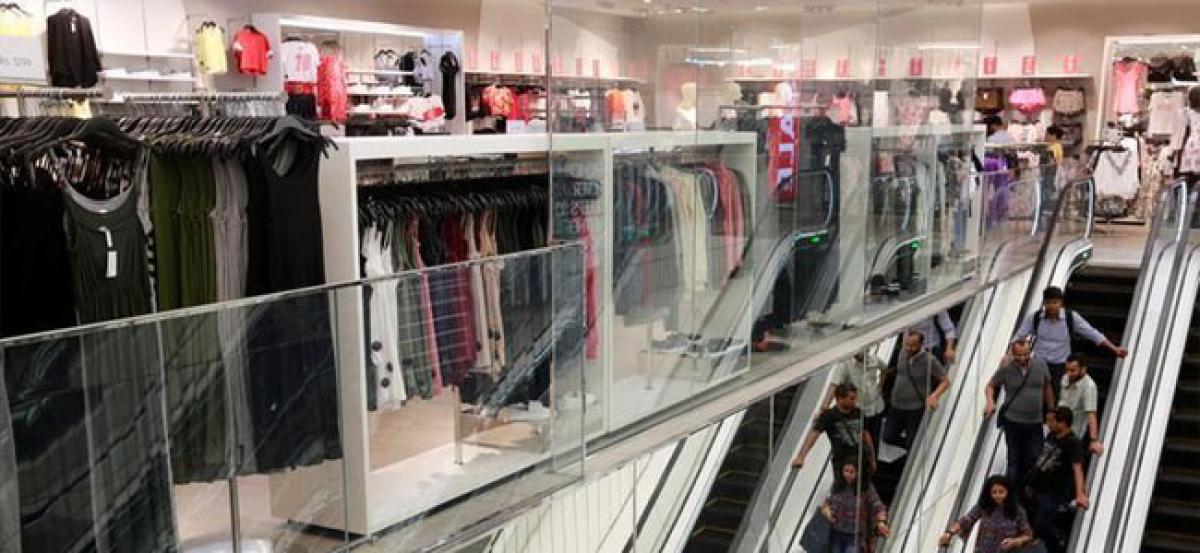Live
- Indian Institute of Creative Technology to open centre in city
- Darshan interim bail: HM appeals to SC to vacate stay
- DCCB’s call to avail new crop loans
- Garena Free Fire MAX Redeem Codes for November 14: Claim the Booyah Captain Bundle
- Telangana Police’s Drug Crackdown Sparks Privacy Concerns at Pubs
- Indiramma Housing remains top priority for govt: Ponguleti
- KSRTC starts Volvo bus Service to Sabarimala
- Toxic chemical detected in 31 foods coming from Kerala into State
- Severe Smog Engulfs Delhi: Flights Delayed and Air Quality Hits Dangerous Levels
- Court orders confiscation of govt assets in compensation dispute
Just In

Indians have started paying more for items ranging from movie tickets to cholesterol tests, thanks to the new goods and services tax, and that raises the prospect the central bank will grow more cautious about cutting interest rates deeply.
MUMBAI/NEW DELHI: Indians have started paying more for items ranging from movie tickets to cholesterol tests, thanks to the new goods and services tax, and that raises the prospect the central bank will grow more cautious about cutting interest rates deeply.
Increases in charges for services, if sustained, threaten to push up core inflation, which excludes food and energy prices. Nomura estimates the annual core rate could rise as much as 60 basis points.
Although headline inflation slumped to 2.18 percent in May, its lowest since a new series was adopted five years ago, core inflation has stubbornly stayed above 4 percent for years.
Statements from the Reserve Bank of India's monetary policy committee have cited core inflation as a key reason for keeping rates on hold at 6.25 percent since October, given concerns it will spill over into broader prices and threaten the RBI's target of 4 percent headline inflation.
An acceleration could make the central bank extra-cautious in reducing rates at a time many analysts believe the economy, weakened by over-leveraged banks and tiny private investment, could handle cuts of up to 50 bps instead of the single 25 bps trim expected at the next review in August.
"Given that the long-term target is to have inflation at 4 percent on a durable basis, the central bank is bound to exercise some caution while assessing core inflation," said A. Prasanna, economist at ICICI Securities Primary Dealership in Mumbai. "Therefore we can expect just one more rate cut."
India will post June inflation data on Wednesday, with the headline rate expected to ease below 2 percent, though the core one is likely to stay around 4 percent.
Executives Fret
Under GST - India's biggest tax reform in the 70 years since independence from British colonial rule - tax rates for services have been broadly raised.
The health-care sector is exempt from GST, but people taking cholesterol tests face higher charges, as clinics are passing along their higher input costs. Other services are directly impacted by GST; moviegoers in some places are paying up to 32 percent more for a ticket.
Higher costs for services are meant to be offset by lower tax rates for goods such as food products, and the government has said it expects the GST to have a "broadly neutral to disinflationary impact" in prices.
In practice, much remains uncertain about how individual businesses will respond. Executives in the services sector say they may be unable to offset the higher taxes through lower costs or by trimming profit margins.
Deepak Sahni, founder of Healthians.com, a medical test provider, said despite healthcare's exemption from GST, he is forced to raise test-costs at least 7-8 percent due to taxes on inputs and equipments.
"We operate on a thin margin," he said. "It's not possible for us to fully absorb this hit. We have to pass on the higher costs to consumers."
Worries Overblown?
Although analysts broadly agree that core inflation is bound to accelerate, the RBI's repeated concerns about it have been controversial in markets. To the analysts, sluggish economic growth means that core inflation is unlikely to spill over and raise headline inflation.
India's gross domestic product had annual 6.1 percent growth in January-March, the lowest since late 2014 - a factor that analysts say will keep prices in check given wage pressures are subsiding, output gap is declining and private credit is slow.
"Given the actual inflation level and the reality in terms of excess capacity, dismal credit growth and very low pricing power, the RBI's concerns on core inflation might be exaggerated," said Soumya Kanti Ghosh, chief economist at State Bank of India.

© 2024 Hyderabad Media House Limited/The Hans India. All rights reserved. Powered by hocalwire.com







